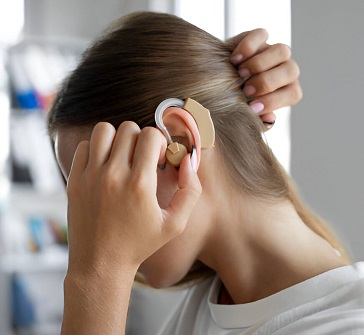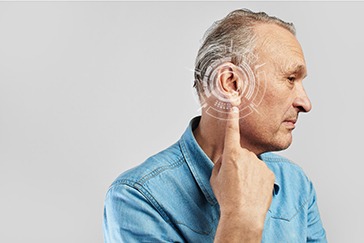 Book Appt.
Book Appt.
 Call Now
Call Now


Conductive hearing loss is a common type of hearing impairment that affects the transmission of sound waves from the outer ear to the inner ear and, ultimately, to the brain. Unlike sensorineural hearing loss, which involves problems with the inner ear or auditory nerve, conductive hearing loss is typically related to issues in the outer or middle ear.
Causes of Conductive Hearing Loss
Conductive hearing loss can result from various factors and conditions that interfere with the normal transmission of sound through the ear. Some common causes include:
Symptoms of Conductive Hearing Loss
The symptoms of conductive hearing loss can vary in severity and may include:
Diagnosis of Conductive Hearing Loss
Diagnosing conductive hearing loss typically involves a thorough evaluation by an audiologist or an ear, nose, and throat (ENT) specialist. The diagnostic process may include:
Treatment Options for Conductive Hearing Loss
The treatment approach for conductive hearing loss depends on the underlying cause. Common treatment options include:
Outlook
The prognosis and outlook for conductive hearing loss are generally positive, especially when the condition is promptly diagnosed and treated. Many individuals with conductive hearing loss can expect significant improvement in their hearing and overall quality of life. It is essential to work closely with healthcare professionals to determine the underlying cause and develop a personalized treatment plan that addresses the specific needs of each individual.
SHALBY Sanar International Hospitals provides extensive medical procedures backed up with our state-of-the-art technology and a team of highly qualified & experienced clinical experts.

Patient from Zimbabwe Treated by Dr. (Prof) Amit Kumar Sharma | SHALBY Sanar International Hospitals

Sudan’s Yiel Hoal Wei Regains Hearing with BAHA Surgery | Dr. Amit Kumar Sharma
Our doctors pen down their research findings and experiences from time to time. Their words provide deep insight into the latest techniques, technologies and other advancements in healthcare. It provides expert answers to all kinds of health questions for real-life issues.
VIEW ALL




Since the day of its foundation, SHALBY Sanar International Hospitals is committed to provide comprehensive healthcare services. It regularly organizes awareness programs in its premises and encourages outdoor healthcare activities and camps with an intent to put focus on preventive healthcare.
VIEW ALL